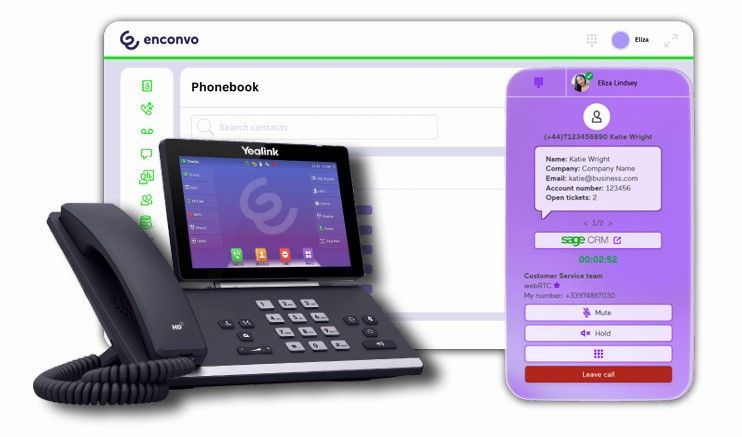Sales Management Definition, Process, Strategies and Resources

What is Sales Management?
An effective sales management process ensures every aspect of your company’s collective sales effort works efficiently. Therefore it's important to have a sales manager who helps their team satisfy buyers and maximise profits.
Sales management is the process of developing a sales force, organising sales efforts and implementing sales techniques that allow a business to reach its sales goals. Having precise sales management processes allows you to stay in tune with your industry, making a huge difference between surviving and flourishing in a competitive market. Having a clear picture of what processes to monitor, you can pinpoint issues early on, coach people before it is too late and have a better overview of which tasks the team should focus on to increase sales and create better relationships.
The Three Key Aspects of Sales Management
There are three umbrellas to manage within the sales process:
The process will vary from business to business but operations, strategy and analysis are the three key starting points.
What is a Sales Manager and What Does a Sales Manager Do?
A great sales manager is the person who guides your salespeople and is responsible for:
- Setting sales goals and quotas
- Motivating and mentoring the team
- Creating sales plans and workflows
- Employing and onboarding new hires
- Organising sales training programs
- Customer Relationship Management (CRM)
- Pipeline management
- Coordinating with sales enablement and marketing teams
- Overall team management
Although the list above shows multiple responsibilities within a sales manager role, the three most important tasks at which a sales manager excels are: building the team, defining the sales process and reporting.
Sales Operations: Building the Team
The sales team holds a direct connection with the product and customer. Sales team members should be trained to develop their skills regardless of their sales experience and certifications, instead of being viewed as money-making machines. This is because it’s not enough for salespeople to be great sellers – they must also be great at dealing with your product and representing your organisation so that customers want to engage with it.
Set your team up for success by giving them ambitious yet realistic targets, which you can track to measure future success, ensuring the sales team you manage is closely aligned working as individuals yet collaboratively. A joined-up approach will result in fewer errors and greater achievements for the sales force and wider company.
To achieve this:
- Set sales and development targets
- Assign territories for team members to manage
- Establish goals and sales quotas
Sales Strategy: Defining the Sales Process
Every business has a sales cycle. This is a series of tasks that help a company’s product reach its users. A sales pipeline, or sales funnel, makes it easier to organise these tasks and manoeuvre deals to completion.
What is a Sales Pipeline?
A sales pipeline is a visual way of tracking prospects and leads as they move through various stages of the buying journey. This can also be visual to help salespeople organise their work.
However, even a mapped pipeline cannot determine or control your results. This is why it is important to manage your activities. Seeing the sales process broken down into stages motivates salespeople to work harder on controllable activities, stay focused and conquer more challenges.
Sales activities that are within a salesperson's control include:
- Lead generation, scoring and qualification
- The number of sales calls, follow-up emails, social media messages and other outreach activities they undertake
- Market research on new products, new segments and other relevant information
- Product knowledge
Keeping salespeople accountable for performance is also an important aspect of the sales manager’s job – that’s where reporting comes in.
Sales Analysis: Reporting
Reporting helps you understand how your current strategy affects your company's success and gives you insight into what you can do to improve your efforts, whether it's hiring more salespeople or redistributing tasks.
Successful reporting involves using sales metrics or quantifiable indicators that tell you how each aspect of your sales operations performs and whether you are achieving your targets.
With the standard sales funnel, you should be able to measure the following four metrics:
- Number of deals
- Average deal size in your funnel
- Close ratio, or average percentage of deals won
- Sales velocity, or average deal lifetime before closing
Collecting this data will help you to find your target customers faster as you will see which types of customers move through the process in the shortest time and who spends the most.
A CRM sales management tool will help you gather this information in reports and dashboards to streamline your sales management process.
Who Benefits from Sales Management?
Effective sales management positively affects everyone within the sales cycle. Three key stakeholders are involved in the sales management process: the sales manager, the salesperson and the customer.
A sales manager oversees an organisation's sales team's processes and is typically in charge of talent development and leadership. Having an effective management process allows them to drive the company forward. They’ll have a clearer vision of where they stand amongst their competition and know how to stay ahead.
A salesperson represents their company and directly contacts potential customers whether face-to-face, via phone or solely online. Salespeople typically report to and work closely with their sales managers on performance goals. As with the sales manager, the scope and clarity that come from effective sales management boost confidence and give salespeople better visibility of their work.
The customer will inevitably have a better experience and be more inclined to purchase your product or services with an effective sales management process. Customers may even share their experiences online, providing social proof to help other prospects convert.
Use Technology to Manage Customer Relations
Having an organised sales funnel will provide a clear view of your sales management process and provide the available opportunities while forecasting revenue for the months ahead.
Although Excel spreadsheets can be effective, a CRM tool will give you a clearer overview of your current assets and pinpoint key factors in your company's future success. Incorporating technology in your sales strategy will help to ensure no deals fall through the cracks so you can maximise profits.
Cloud-based CRMs are great for helping your team improve collaboration, as they typically offer flexible pricing and easy access via the Internet. Before purchasing any CRM tool, answer the following questions to ensure you make the most suitable choice for your team:
- Is it easy to learn and use?
- How can I customise it to fit my needs?
- Are there cross-platform integrations?
- Will it notify me when I need to take action, and will those notifications come in real-time or at intervals?
- Does it offer accurate sales forecasting and reporting?
- Is it mobile-friendly? Can I access it from anywhere at all times?
Sales Management Tips and Tricks
The more time you put into your sales process, the more you should get out of it.
There are plenty of productivity tools to help ease the process of managing and closing deals. Sales managers often work with content teams to develop content marketing materials that build value around their products or services, making it easier for salespeople to sell. This is due to selling being an ongoing process as most people do not buy immediately. They need convincing and reassurance. Effective content is more likely to move the consumers along the sales cycle than a salesperson alone. Informative content often introduces products and services to potential buyers - especially when it appears high on search engine results pages, where many buyers start their journeys.
Sales Manager Resources: How to Start Managing a Sales Team
If you are wanting to become a sales manager or just want improvement in the sales manager role, you must understand the importance of the sales management process. This includes the planning and goal-setting tasks that come with it.
There are two key aspects most sales professionals consider first when moving into management: career types and compensation.
Sales Leadership Careers
The people who oversee sales organisations and manage sales teams typically have one of the following roles:
- Director of sales
- District sales manager
- General manager
- Chief revenue officer
- Sales and account manager
- Business development manager
- Regional sales manager
- Sales and marketing manager
- Sales and marketing vice president
- Sales supervisor
- Vice-president of sales
Sales managers come from a variety of backgrounds. Some start as sales representatives and work their way up and others come from unrelated fields without years of experience. In order to apply for a sales manager role you must have strong communication, leadership skills and problem-solving abilities.
Key Takeaways
There is an endless amount to learn or improve on to achieve success in a sales manager position. Once you decide to build or improve your sales management process, you can start by:
- Reading account management books, sales books or blogs
- Making a Google alert for key terms such as "sales management" to stay up-to-date with the latest news in your industry
- Experimenting with sales management software that will help you gain visibility into and stay on top of your management process
- Reading the sales glossary below to brush up on your sales vocabulary
Sales Glossary
Activity-based selling: The theory that you can close more deals by focusing on the activities you can control, such as the number of calls or appointments made, rather than focusing on sales results or sales volume, or making a certain amount of money in sales.
Close/ closing: Bringing a prospect to the final buying decision.
Close ratio: Number of deals you close compared to the number of deals you have presented.
Cold calling: Getting in contact with a potential customer with no prior contact or relationship in hopes of setting up an appointment or informing them about your product or service.
Conversion: The act of turning a prospect into a customer.
Conversion rate: The percentage of prospects turned into new customers.
Customer Relationship Management (CRM): A tool or piece of sales management software to manage your customer relationships and sales pipeline. Often also used as process management software.
Deal: An agreement to meet or take action with a prospect.
Demo: A sales presentation of your product or service.
Lead: Anyone who could potentially be a customer.
Marketing: The act of promoting your product or service.
Metrics: A collection of individual and organisational performance indicators and ratios calculated from collected data that describe a company's historical and ongoing sales processes.
Product: Something made to be sold to a consumer.
Prospect: A potential customer or person who may be interested in a company's product or service.
Sales quota: A fixed share of something that a person or group is expected to achieve or contribute to.
Retention rate: The percentage of customers who stay with a business.
Revenue: A company's income or earnings.
Sales cycle: The series of predictable phases required to sell a product or a service. Sales cycles can vary greatly among organisations, products and services, and no two sales will be the same.
Sales dashboard: A method of measuring sales performance from a birds-eye view. A sales dashboard helps measure key metrics, individual team members and sales activities.
Sales force: Division of a business responsible for selling products or services.
Sales funnel (or pipeline): A systematic and visual approach to selling a product or service.
Sales management: Process of developing and coordinating a sales team.
Sales management planning: Process of thinking and organising activities to achieve a desired goal.
Sales management process: Steps taken to attain a company's performance objectives.
Sales management strategy: A method to bring out a desired outcome.
Sales manager: Someone who's responsible for managing sales professionals and overseeing a company's sales process.
Sales meeting: A meeting with the sales team, often to discuss processes, products and services, as well as the potential benefits for the buyer.
Salesperson: Someone who typically works directly with customers to inform them and sell a product while providing customer service.
Sales reporting: The documentation of a company's activities.
Sales targets: Objectives or goals for a salesperson or company.
Sales velocity: Time it takes for a new deal to close, from the initial contact.
Service: An action performed to satisfy a customer's needs or problem.
Stay Connected with ERBS
Read our latest updates
Enquire now
Get in touch



